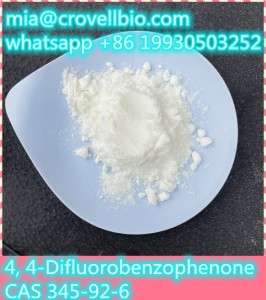Product Description
Product Name:Theophylline
Formula:C7H8N4O2
Molecular Weight:180.17
CAS No.:58-55-9
EINECS:200-385-7
Density:1.466 g/cm3
Melting Point:271-273 °C
Boiling Point:454.091 °C at 760 mmHg
Flash Point:228.426 °C
Solubility:8.3 g/L (20 °C) in water
Appearance:white to light yellow crystal powder
Description
Theophylline is used to prevent and treat wheezing, shortness of breath, and chest tightness caused by asthma, chronic bronchitis, emphysema, and other lung diseases. It relaxes and opens air passages in the lungs, making it easier to breathe.
is a chemical found in both black and green tea in nature and is a PDE inhibitor widely used to treat respiratory diseases.It has similar structure and pharmacological properties to caffeine.The main functions of theophylline are:Relaxing bronchial smooth muscle strengthens myocardial contraction quickens heart rhythm increases blood pressure increases renal blood flow some anti-inflammatory effects.Theophylline is mainly used in the treatment of chronic obstructive diseases (COPD) and bronchial asthma.
Function
Theophylline is well known as dimethylxanthine .Theophylline is a methylxanthine drug used in therapy for respiratory diseaes such as asthma under a variety of brand names.Because of its numerous side-effects,Theophylline is now rarely administered for clinical use.It is found in cocoa beans
The main actions of theophylline involve:
relaxing bronchial smooth muscle
increasing heart muscle contractility and efficiency (positive inotrope)
increasing heart rate (positive chronotropic)
increasing blood pressure
increasing renal blood flow
anti-inflammatory effects
central nervous system stimulatory effect mainly on the medullary respiratory center.
What is Theophylline Anhydrous and how does it work?
Theophylline is a natural alkaloid derivative of xanthine isolated from the plants Camellia sinensis and Coffea arabica. Theophylline appears to inhibit phosphodiesterase and prostaglandin production, regulate calcium flux and intracellular calcium distribution, and antagonize adenosine. Physiologically, this agent relaxes bronchial smooth muscle, produces vasodilation (except in cerebral vessels), stimulates the CNS, stimulates cardiac muscle, induces diuresis, and increases gastric acid secretion; it may also suppress inflammation and improve contractility of the diaphragm.
Theophylline works by opening the airways in your lungs. It does this by relaxing the muscles and decreasing the response to substances that cause your airways to constrict. This makes it easier for you to breathe.
Applications
The main therapeutic uses of theophylline are aimed at:
chronic obstructive pulmonary disease (COPD)
asthma
infant apnea
Blocks the action of adenosine; an inhibitory neurotransmitter that induces sleep, contracts the smooth muscles and relaxes the cardiac muscle.
Theophylline is used to treat the symptoms of asthma or other lung conditions that block your airways, such as emphysema or chronic bronchitis. It’s used for long-term treatment.
This drug comes in the form of an oral tablet, oral capsule, or oral solution.
contact information:
Whatsapp:86-18873303856
skype:live:d260a58b346fba38
email:majorina.cai@chembj.com
TEL:+86 18873303856













 Product quality protection
Product quality protection 







